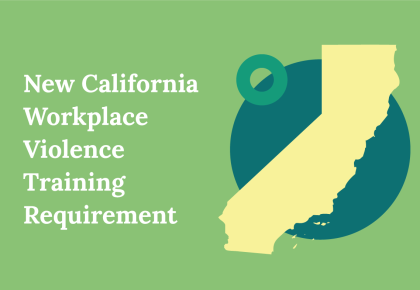Preventing Violence in the Workplace
Strategies for Office Incidents
Workplace violence is a sobering reality that can occur in any office. The threat, which can deeply impact employees and their organizations, manifests in various forms.
Verbal Altercations
These are among the most prevalent forms of workplace violence. They can escalate quickly, fueled by stress, frustration, rivalry, and interpersonal conflicts.
These incidents might involve heated arguments, yelling, or derogatory language, creating a hostile atmosphere that undermines productivity and morale. Whether it’s a disagreement over a project or a clash of personalities, unresolved tensions can lead to verbal confrontations that result in emotional trauma.
Verbal altercations often begin with bullying and harassment, which then escalate. Employees might experience harassment based on their gender, race, religion, sexual orientation, gender identity, or other characteristic. This creates a toxic work environment where individuals feel marginalized and vulnerable.
Discriminatory behavior undermines employee morale and exposes organizations to legal liabilities. Employers must prioritize diversity and inclusion initiatives and enforce strict policies to address harassment and discrimination promptly. By prioritizing the safety and well-being of employees, organizations can create a work environment where everyone feels valued, respected, and secure.
Physical Assaults
While less common than verbal altercations, physical assault poses a significant threat in office environments.
Workplace bullying can escalate to physical aggression, causing harm to individuals and creating an atmosphere of fear and intimidation. Employers must take proactive measures to prevent such occurrences by instituting a zero-tolerance policy against violence and providing resources for conflict resolution.
Threats and Intimidation
These tactics are often employed by individuals seeking to exert control or manipulate others in the workplace. This may involve stalking, cyberbullying, or making explicit threats of violence. Such behavior can instill fear and paranoia among employees, affecting their mental well-being and sense of security. Organizations must implement robust security measures, including threat assessment protocols and employee training on recognizing warning signs of potential violence.
Domestic Violence
Workplace violence may stem from domestic disputes, posing a significant risk to employees and bystanders. Abusers may target their current or former family members, roommates, or dating partners in the workplace, putting them and their colleagues at risk of harm.
Employers must be vigilant in identifying signs of domestic violence and providing support and resources for affected employees. Establishing clear protocols for responding to domestic violence incidents can help mitigate the risk and ensure the safety of all employees.
Not One-Size-Fits-All
Workplace violence in office environments encompasses a range of incidents. Addressing these issues requires a multifaceted approach that involves promoting a culture of respect, providing conflict resolution resources, and implementing robust training measures.
Increased Focus on Training
Workplace violence prevention is required in California under recently passed Senate Bill 553. Similar laws already exist in some states for healthcare employees, who are at greater risk for workplace violence.
In response to this growing need for training, Syntrio worked with legal counsel to create a general workplace violence prevention course. It details the warning signs of each type of violence and positive and safe bystander intervention and de-escalation techniques.
Contact us today to preview the course and see for yourself how it will empower your employees to help create and maintain a safe workplace.
Resources
- California Workplace Violence: A Primer for Compliance with SB 553
- New California Workplace Violence Training Requirement Goes into Effect in 2024
- U.S. Mandatory Harassment Training
- Harassment Training Requirements by State
- Workplace Violence Prevention Training for California Employees
- Employment Law and Harassment Training


